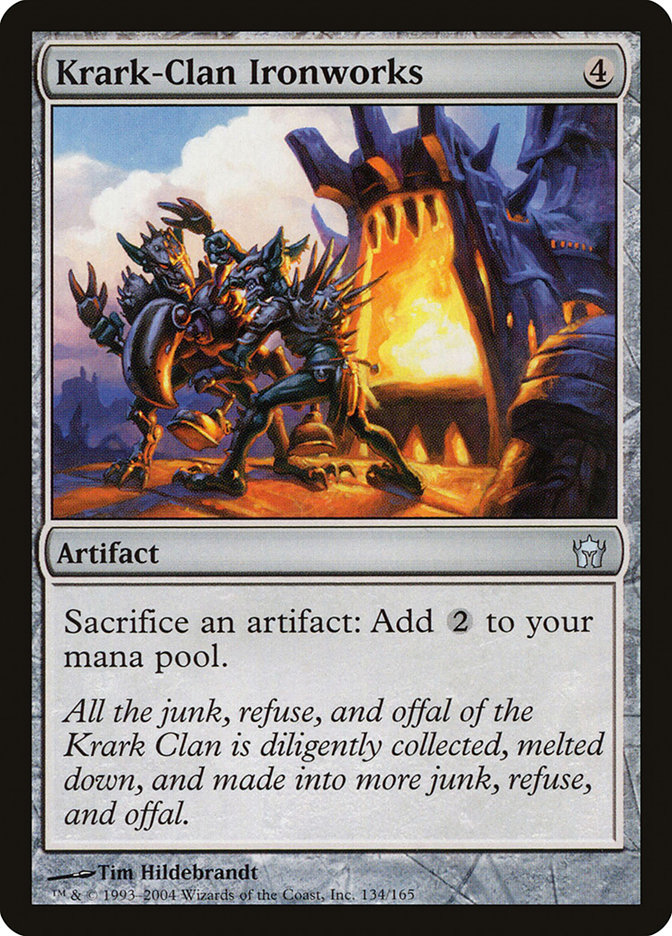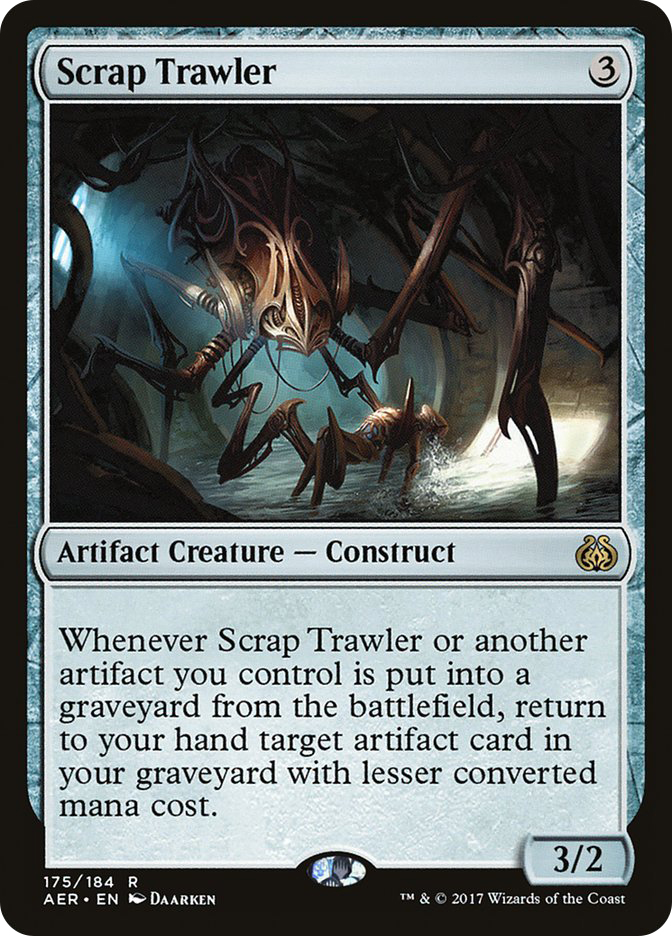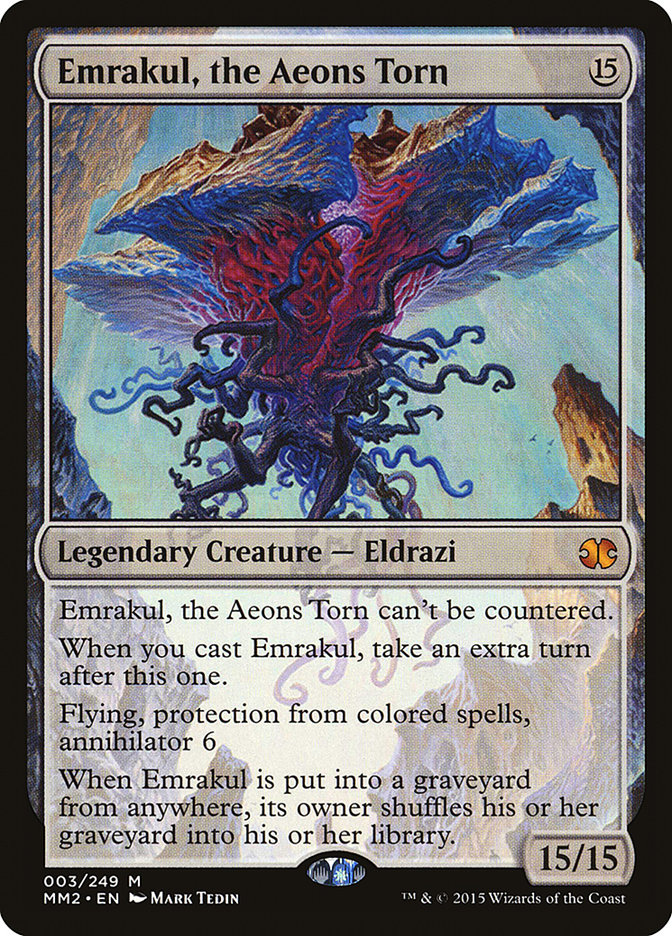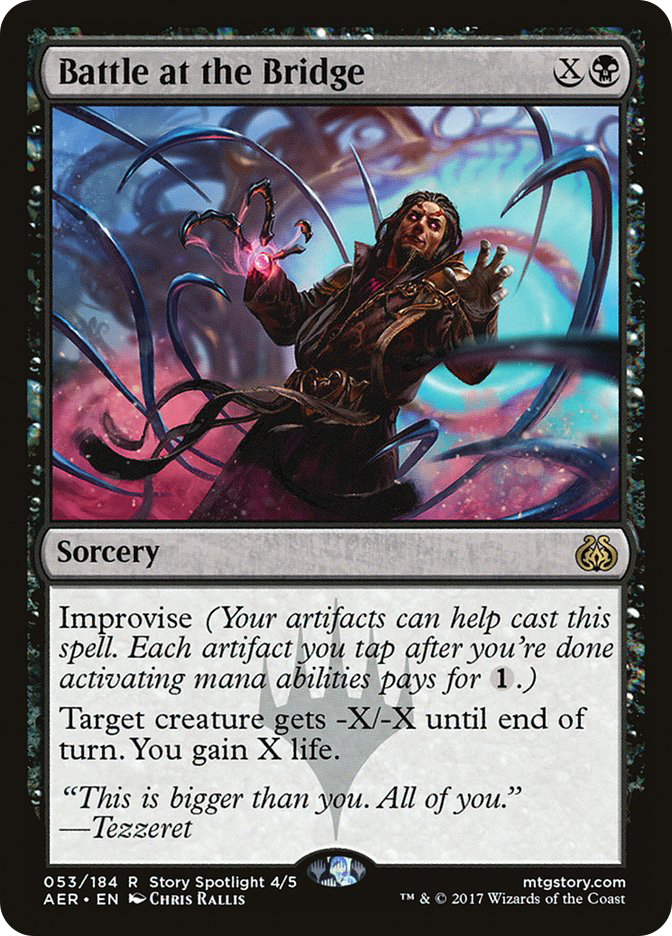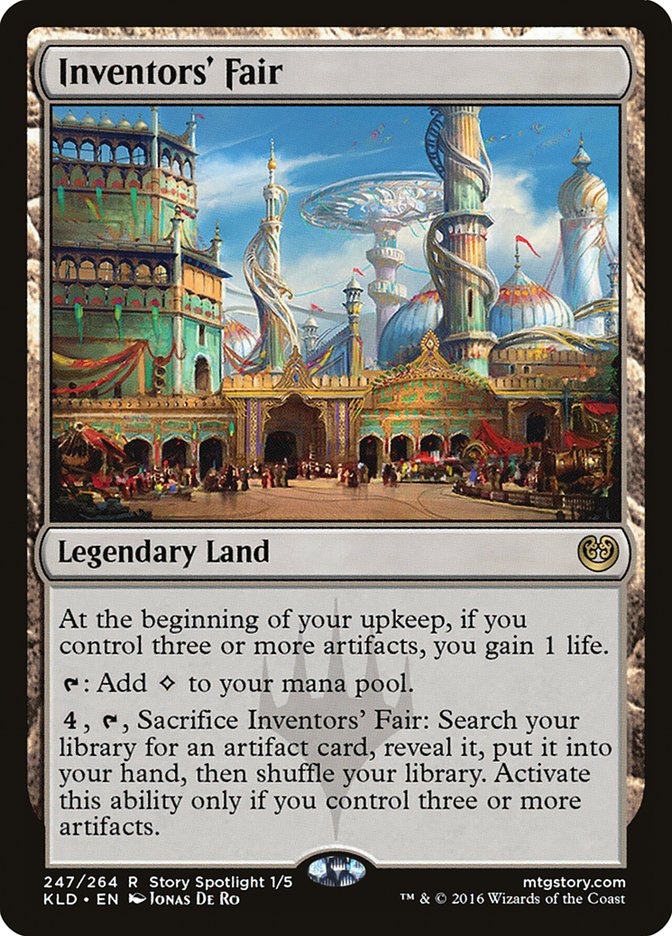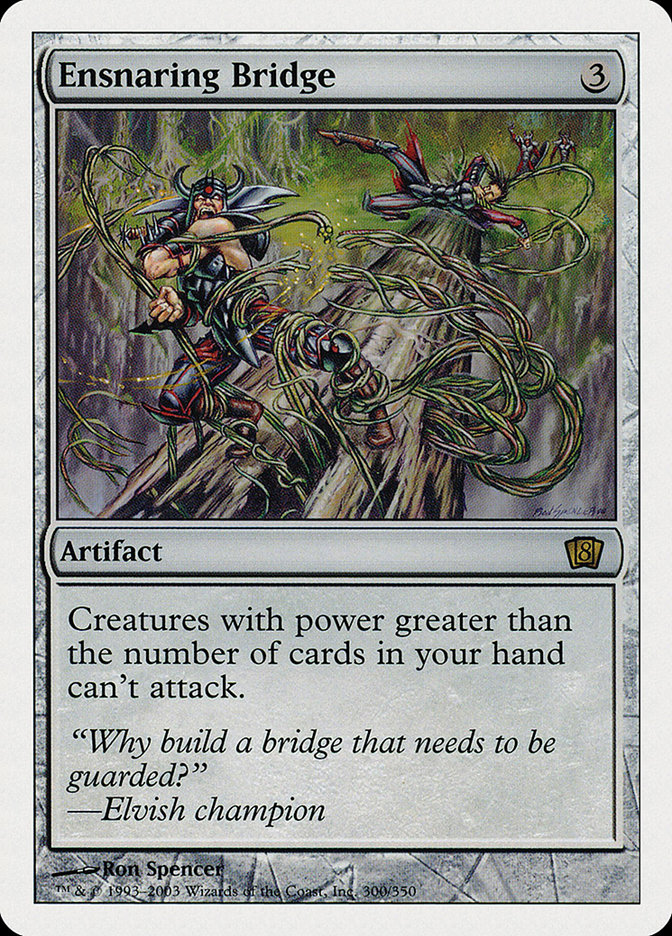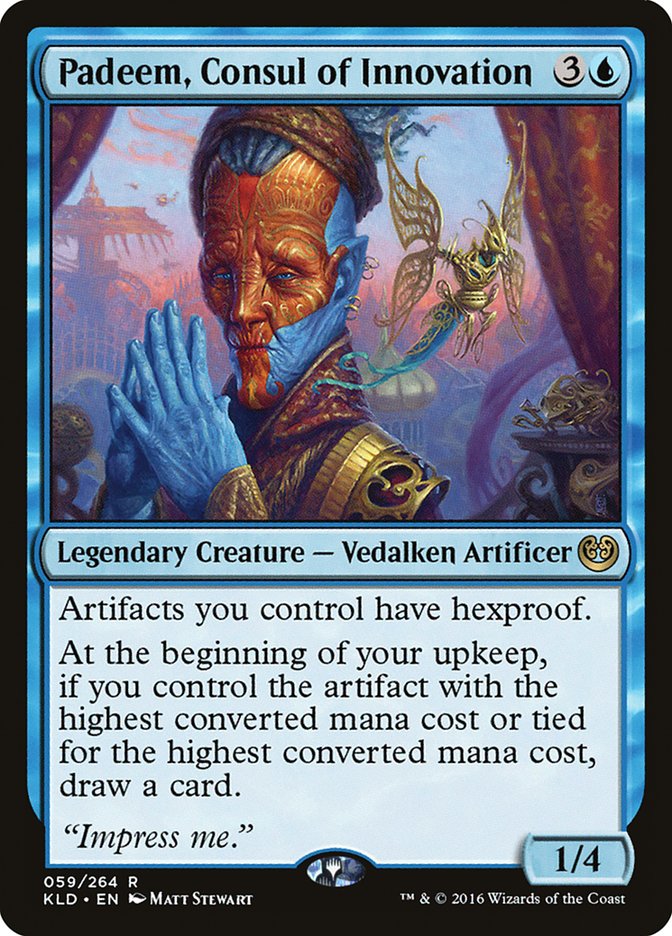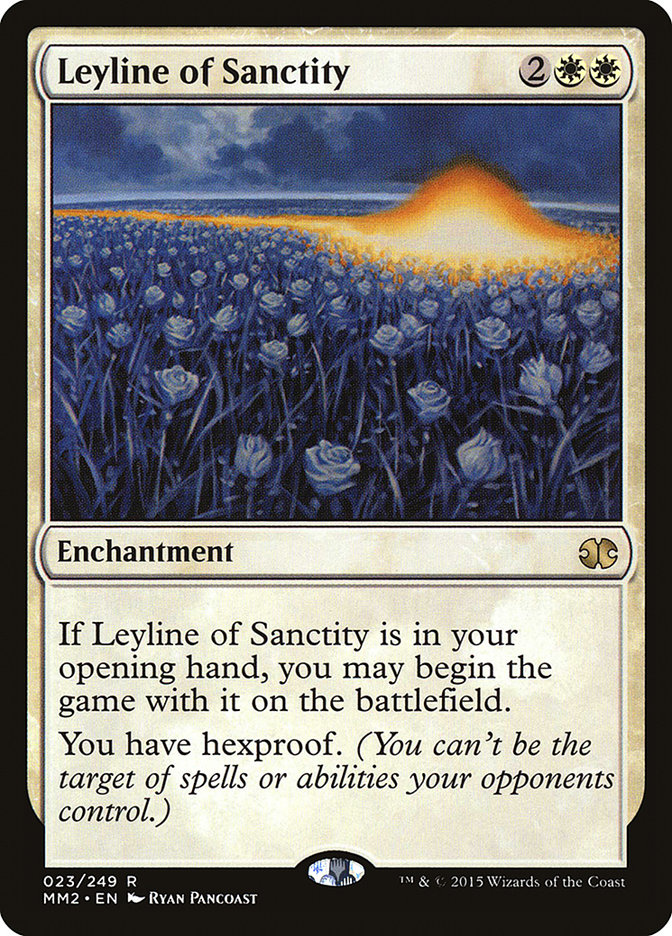The SCG Tour has been Modernized.
I love competitive Magic and the SCG Tour, but it is no secret that Modern isn’t my cup of tea. The viability of blue-based control in the popular format rests at a consistent 11-4 tournament record, which is unacceptable for the Spikes like me out there. I have always played “bad control decks,” as the haters say, with a chip on my shoulder, but even I know when it’s time to drop the banner.
It turns out that the combo side of Modern is fun, and has been that way for quite some time. I played in the first Modern Pro Tour back in Philadelphia years back, and my deck of choice was Protean Hulk Combo. I’ve written about it before, pointing out the sheer agony of clicking each individual trigger on Magic Online while comboing off. That nostalgic tournament influenced me to pick up another deck that was borderline-unplayable online due to the amount of clicking, Ironworks Combo (KCI).
Ironworks Combo was a deck that my teammate and great pal Pascal Maynard played during the Team Unified Modern GP. In that tournament, I had a shocking finish of 10-4 with U/W Control, my homeboy Brian Braun-Duin was struggling with Jund (splash white) Death’s Shadow, and Pascal had a smooth 11-3 record. That record could have been easily 13-1, but we were working out some of the kinks that come with playing such a weird deck.
Against one of my opponents in Baltimore last weekend, I gave a shout-out to Pascal as I attacked his Elspeth, Sun’s Champion with my Emrakul, the Aeons Torn instead of my opponent. (Pascal made a slight error attacking the opponent, resulting in a quick -3 from one of the greatest planeswalkers of our time, killing the Eldrazi terror.) I played some wild games, and won some matches I would have never had a shot winning, because of the games I watched Pascal play all weekend.
The deck is complex, unforgiving, and requires practice with cards that haven’t seen play in nearly a decade. I didn’t have time, or patience, to play with the deck online, so I learned it on-site. For an in-depth look at the deck, look at this deck tech with Nick Miller, and watch me battle Affinity Day 1, and Burn in Round 10 and Death’s Shadow in Round 12 on Day 2, just click the links.
Creatures (9)
Lands (17)
Spells (34)

I have made a few changes since my Baltimore experience last weekend at the SCG Tour. In a deck like this, shifting around the maindeck is dangerous because the deck requires a critical mass of cantripping components to go through the deck.
But I knew some changes had to be made, due to my difficulty with the Death’s Shadow matchup. I started Day 2 feeling great, defeating Burn first thing in the morning with an epic Battle at the Bridge off the top Game 2. The deck was firing on all cylinders, and I was 9-1 with only five rounds left to go. I then lost to Dredge piloted by Ben Friedman, which stung quite a bit. The matchup is fantastic for me, with him being on a slower “combo” deck. Game 1 should go my way consistently because Ben doesn’t have any way to interact with my combo in his maindeck. It turns out that Krark-Clan Ironworks must be drawn, and drawing multiple Ancient Stirrings doesn’t provide a guarantee.
I rebounded the next round, defeating my buddy Daryl Ayers on camera, but the tournament fell apart at 10-2. Modern is all about matchups, even more so than other formats. The metagame is infested with ten different top-tier aggressive decks, a half-dozen decent combo decks, and a handful of unplayable control decks. This provides a nightmare scenario for a deck that relies on both the graveyard, and artifacts. Even with that grim reality, the deck still punishes many of the described decks, except one. Death’s Shadow has proven to be the Achilles Heel of Ironworks Combo, so I took pen to paper for a solution.
Maindeck Changes
The maindeck is still very like that of Baltimore, but with a few key changes to improve its chances against decks with a great deal of disruption. Myr Retriever is the secret tech to make Ironworks Combo users more resilient to the avalanche of hand disruption that falls upon us from turns 1 through 3. Myr Retriever has a modest power level, a 1/1 creature for two mana that Regrowths an artifact. It has been the difference-maker after making the team. They Thoughtseize or Inquisition of Kozilek you on turn one, you cast the little Myr, and it blocks and retrieves your best artifact.
Myr Retriever also provides an entirely new dynamic to the combo process. Casting a Myr Retriever after a Krark-Clan Ironworks allows an immediate combo to begin if there was a fallen Scrap Trawler in the graveyard. The Myr Retriever also provides two mana, returns all the Chromatic Stars / Terrarions / Chromatic Spheres back to the user’s hand, and is a higher-costed artifact to easily combo off from there. This small addition may not look like much, but it has surpassed all expectations and improved matchups that were troublesome before. This combo deck can sometimes put you in a panic, making you feel like the combo is drying up during the process, but having one Myr Retriever in the mix has put that to rest.
To make room for the Myr that has seen the top tier of Constructed, I cut one Chromatic Sphere and an Everflowing Chalice. The Chromatic Sphere is easily the worst card in the deck, but it is also a necessary evil. The one-drop artifacts allow us to search for combo pieces early and late, which makes them very difficult to cut. I believe cutting one more is in the discussion, but not for anything that doesn’t directly draw a card. When sideboarding, these come out the most often, following by Everflowing Chalice, which led me to the obvious drops for some maindeck innovation.
The only other change in the maindeck is the addition of a third Inventors’ Fair. This land has a Demonic Tutor feel in the deck, providing a combo piece in desperate times. My wins against decks with heavy disruption come on the back of the Inventors’ Fair, but sadly I drew them sparingly. I only had two copies in the deck because of my legendary fear.
Legendary lands are tough to play as four-ofs, but just two wasn’t enough. I found myself with these utility lands; however, most of them did nothing when I was starving for another piece of the puzzle. I cut a Sanctum of Ugin, because four was just too many. You don’t need to draw them in multiples, and they only helped me speed up the kill rather than saving me from death.
Inventors’ Fair is the best land in the deck outside of Darksteel Citadel, which is amazing for obvious reasons. There was some debate on cutting the Tendo Ice Bridge, but the math convinced me to leave that emergency source of color in there. I played an Aether Hub in the actual tournament because they were sold out of the ancient land. Some would argue that these two lands are identical, but there is some possible downside on a missed energy trigger, Trickbind (would never happen), or an opponent responding to the energy trigger to prevent you from having access to the mana immediately. The dangers were negligible, so I ran it confidently.
Sideboard Changes
This is where the real post-tournament analysis had an impact. The sideboard used to look like this:
4 Nature’s Claim
The only terrible card in the previous sideboard was Ensnaring Bridge. Pascal and I didn’t like it in the deck before, but I didn’t have a lot of time to really dig into the metagame with this odd deck. After having a fifteen-round tournament added to my Ironworks Combo experience, I am now positive that the card is unplayable in the deck for a few reasons.
The most obvious reason is the inability for Ironworks Combo to drop cards out of hand in time. The prison decks of Modern consist of way more one-mana artifacts and Spellskite to protect the Ensnaring Bridge from enemy fire.
Ironworks Combo bringing in artifacts while opponents are loading up with artifact hate is a recipe for disaster. Many of the decks that attack your life total with creatures pack Ancient Grudge or Destructive Revelry, which makes this sideboard plan terrible. The card was intended for Bant Eldrazi, but even that deck can amass a giant force while waiting for its eventual Nature’s Claim. I sideboarded the card in zero times and regret ever sleeving it up.
The Padeem, Consul of Innovation was a much more painful cut than Ensnaring Bridge. If you all play this deck, find a sideboard card slot you can live without and get this blue legendary creature back in the mix.
Against Death’s Shadow, the combo in the early-game was impossible. I had no way in Baltimore to protect my hand against the arsenal of disruption, so I went with Padeem, Consul of Innovation to help get me to the “late-game” of turn 5 or 6. It was often taken out of my hand, but that was a success. The shift away from Padeem, Consul of Innovation was due to my faith in Leyline of Sanctity.
Leyline of Sanctity is a card I have loved to hate since it was printed. It’s devastating when drawn late, but miraculous in the opening hand. It is the only solution I could muster to help defeat the hardest matchup in the world for Ironworks Combo, which is Death’s Shadow. Having one in the opening hand moves the deck from winning in the later turns to being back to a turn 3 or 4 explosive combo deck again. I am not sold on the “beginning game actions” enchantment, but I do believe it is the best bet we have to keep our hand safe from the eight discard spells that await us on the other side.
I found room for the enchantment by trimming a Ghirapur Aether Grid, a Defense Grid, our blue legendary friend, and an Ensnaring Bridge. The Ghirapur Aether Grid cut was the next-easiest cut. The sole purpose of Ghirapur Aether Grid is to give an alternate win condition when locked down by hate enchantments. Sometimes it isn’t required to win, which made it extremely rough when multiples were drawn. Having just one in the deck, along with four Nature’s Claim, provides enough outs to any set of hate that the opponent can muster.
The last addition in the sideboard was the third Nihil Spellbomb, because of the free nature of the card. It cantrips, works with Scrap Trawler, and can be tutored off Ancient Stirrings. These changes were made to give Ironworks Combo the tools needed to beat the toughest matchup out there.
I can easily see Ironworks Combo being one of the toughest decks to beat in Modern if played correctly. I hope you all enjoyed my break from control, but don’t get too used to it!


